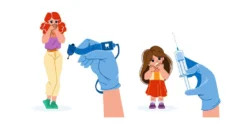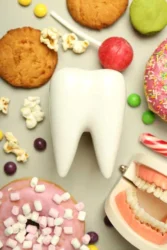
How to fix an underbite? Is underbite correction even possible? And if so, how complex is the process? Orthodontics does a great job at fixing dental problems, but there are a few things you will need to know before you do anything. You can also visit website to schedule an appointment and see what some of the options you can try out are.
What Is Underbite?
An underbite is a condition where the upper and lower jaws are not aligned. Based on the location of the lower jaw, a person can have an underbite or an overbite. The term underbite means that the lower jaw is in front of the upper one, and it can cause numerous problems for the patient.
Naturally, underbites can be different, with different levels of misalignment. If we are talking about a mild case, it is highly likely that you wouldn’t be able to spot it at first. At the same time, there are those with a severe level of misalignment, where the lower jaw sticks out, causing issues.
And this is one of the most important things we should address. Many people believe that underbite is just a cosmetic issue. But that is not the case. In fact, it can cause significant problems to teeth and the jaw, and it is one of the primary reasons why this situation needs to be addressed.
What Is the Cause?
The main problem with an underbite is that it is not something you can control. That is, it is caused by genetics. As a result, there is nothing you can do to prevent it. While there are those that suggest how habits we build during childhood can lead to misalignment, it all comes down to the cards you’re dealt. Unfortunately, there are a few things you can do to increase the chances of avoiding the problem.
For example, the factors that contribute to the development of an underbite include thumb sucking at an early age, as well as using a pacifier. Children who spend a lot of time with their thumb in their mouth might have crooked teeth, and it might worsen the condition leading to an underbite.
A recent study showed that thumb sucking is one of the primary reasons for malocclusion, which is among the most common dental problems. So, one thing you can do is try to reduce the amount of time your child spends using the bottle or sucking on their thumb since it will reduce the chances of developing an underbite. Of course, this is just one of the solutions, and it is still possible for someone to develop an underbite even if they never sucked on their finger.
Will Underbite Lead to Problems?
The short answer is yes. Underbite can lead to many different problems. The most obvious issue is self-esteem. Having a misaligned jaw is not considered beautiful, and people that have this condition are most likely to feel self-conscious. So, the problem starts with the cosmetic aspect. But it is far from being the only one.
It is possible for the misalignment of the jaw to cause chronic pain or even TMJ (temporomandibular joint disorder). That means that you might feel like your jaw is locked in a place, resulting in a popping sensation and pain whenever you try to move it. Furthermore, it can also lead to headaches, dizziness, toothaches, and even hearing problems.
Over time, the condition will only worsen. In some cases, it is possible for the person with underbite to experience halitosis, tooth decay, problems with speech, sleeping, and so on. And this is one of many reasons why the problem should be addressed as soon as possible. Naturally, it mostly depends on the level of misalignment. More severe cases will cause more problems. In contrast, a slight underbite won’t be nearly as problematic.
Is There a Solution?
Yes. There are a couple of solutions and treatment options based on the severity of the condition. One of the most important things to mention is that the age of the patient will play an important role in the underbite treatment. In some cases, younger patients can wear upper jaw expanders. The idea behind them is to pull the upper jaw, allowing it to get in a proper position. Naturally, this is possible when the problem is not severe.
Children can also use a reverse pull face mask, chin caps, braces, and so on. The reason why these orthodontic treatments and correction methods work so well for younger patients is that the jaw is still malleable and growing. It is a lot easier to expand it and make changes to avoid health problems in the future. Of course, this doesn’t mean that there are no options for adults as well.
Unfortunately, the majority of the methods we mentioned won’t be as effective, and often surgeries are the only viable method to solve underbite. The method behind the surgery often includes removing a part of the lower jaw, allowing it to align with the upper one easily. While it might seem scary, the operation is quite common, and it is a low-risk procedure. After that, the patient will need to rest for a couple of weeks until the bones heal and they are ready to continue with their lives. Finally, it is possible to fix underbites with simple tooth extraction and even using aligners.
What to Do?
So, the question is, what to do if you have an overbite? The first thing you need to do is consult your dentist. They will be able to see how serious the condition is and recommend one of many methods of solving the problem.
As we mentioned earlier, there are different types of underbites, and it all depends on the age and the severity of the problem. It is possible that this dental condition can be solved with aligners or tooth extraction, but the only way to know with certainty is to talk to your dentist.
This way, you will have a clearer idea of what to expect, and they will be able to create a plan that will improve your oral health and solve the underbite problem once and for all.






